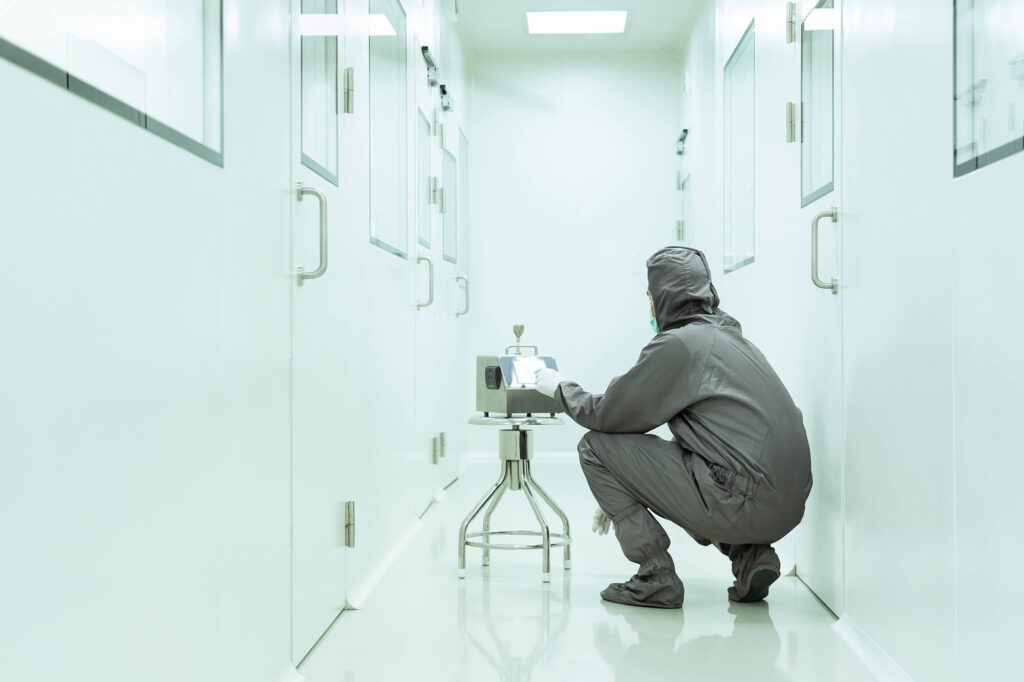Environmental Monitoring: Where does ANSA fit?

The planning and implementation of releasing a cleanroom or an aseptic processing environment can be challenging, especially when the need to begin processing is weighing heavy on everyone’s minds. There are three (3) main categories for establishing a successful Environmental Monitoring Program that will comply with FDA and/or EU regulations: risk assessment for the holistic aseptic process, risk control during EMPQ, and risk control during Routine Environmental Monitoring.
How can ANSA Compliance assist with Environmental Monitoring?

1) The Risk Assessment
The aseptic process needs to be established within the facilities’ design. The following questions need to be answered to get a clear picture of the process:
- What type of products will be utilized in the space? (e.g., powders, liquids, chemicals, biological material, etc.)
- Where will the product be compounded/filled/packaged?
- Will the facility perform aseptic processing or will the product be sterilized?
- Will the process take place within an Isolator or within a set of Cleanrooms?
- Is there a need for Lyophilization?
Once the process is defined, evaluations of possible areas of contamination, high traffic areas, high touch point areas, and critical product contact locations will drive sampling plan(s), personnel traffic patterns, and material traffic patterns. Each room must be classified and maintained in a state of control that complies with FDA and/or EU regulations.
2) Risk Control – EMPQ
The Environmental Monitoring Performance Qualification (EMPQ) is needed to be able to release a cleanroom for GxP activities. The results from the risk assessment can help guide the EMPQ in terms of sampling locations and the type of sampling needed. The overall goal of EMPQ is to ensure a facilities’ environmental monitoring program is robust, accurate, and capable of effectively monitoring and controlling environmental conditions critical to product quality, safety, and regulatory compliance.
Considerations when creating an EMPQ:
- How many sample locations will be needed for the area based on ISO 14644-2 requirements?
- What type of sampling equipment is needed?
- Is there a need for utilities testing?
- (e.g., Clean Steam, Purified Water, Compressed Gasses)
- What type of media will be used?
- Will the incubation and plate reading process be outsourced or performed internally?
- Will the isolation and microbial identification process be outsourced or performed internally?
- What type of cleaning disinfectants will be used? Are they compatible with equipment surfaces?
- Will data be stored and maintained electronically, be paper-based, or will a hybrid system be utilized?
3) Risk Control – Routine Monitoring
After the EMPQ data has been reviewed and trended, a Routine Environmental Monitoring program shall be established with additional flexibility for changes to the qualified environment. Many facilities are using electronic notebooks or LIMS systems for the purpose of data storage and analysis.
How can ANSA Compliance assist with Environmental Monitoring?
To ensure the data integrity of electronic records, our consultants can support and/or perform validation activities for any equipment being used during the Environmental Monitoring operation, including (but not limited to):
- Automated Monitoring Systems for temperature, relative humidity, and/or pressure differential readings in real time.
- CTU temperature mapping to ensure units are acceptable for media storage and incubation use.
- Non-Viable and Viable Particle Counters for sampling air contaminants.
- Microbial Monitoring Systems that use culture-based methods or molecular techniques to detect and identify microorganisms.
- Isolators and corresponding software to ensure the process is performed as intended.
- Enterprise systems including LIMS for data storage and centralized databases.